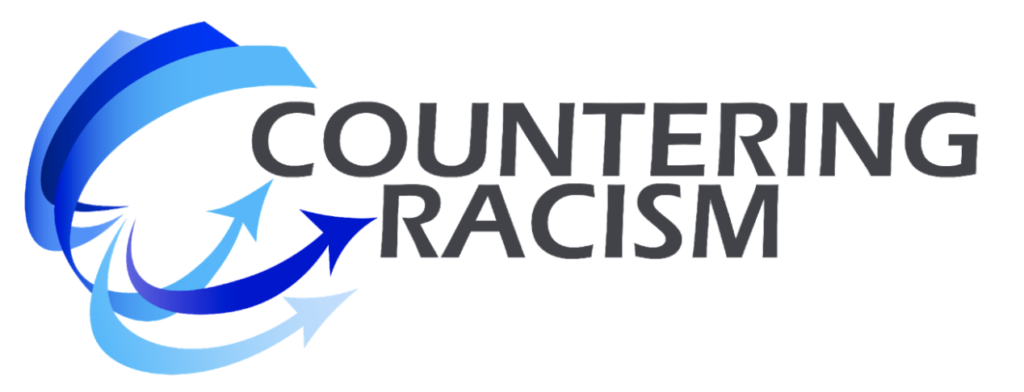Building on Strength
Building the Confidence to "Be All In”
One of the most important factors in getting to sustained effective action is feeling competent to act. Countering racism is a challenge with a great deal of unknown and it can cause a lot of anxiety and doubt about our ability to be competent in acting to counter it.
It’s true that we, as White people, have a great deal to learn – we have awareness to develop and competencies to build to be as effective as we would like to be. It’s also true that we bring a lot of strengths to the game – strengths that we have developed over time in our personal and professional lives.
The best way to develop the new strengths required is to build on the current strengths. That means (1) acknowledging the strengths we bring; (2) identifying the new knowledge and capabilities to be developed, and (3) following the path of mastery to achieve them.
#1
Acknowledge Your Strength – Lose the “Aw Shucks”
Most White people bring more than they think to the challenge of countering racism.
To be successful countering racism we need to build on that strength and avoid the “Aw Shucks” phenomenon. For example:
- “Aw shucks, I don’t really bring much to the effort to counter racism.
- “Aw shucks, I don’t even know the first steps to take.”
- “Aw shucks, I’m just……………”
Beware the Competency Trap
The trap is getting caught in preparing to get in the game to such an extent that we never really get off the sidelines. Awareness and education without committed action is useless.
The key is to commit to action without feeling fully prepared and “ready.” There are two reasons why this works.
- We naturally bring most of the needed capabilities. We probably bring anywhere from 70-90% of the competencies required to have an impact countering racism simply because we have developed personal and professional competencies throughout our lives.
- We can develop the other capabilities we need. Those 10-30% of competencies are important, but we aren’t starting from scratch, and we don’t need to be expert at everything to make a difference.
“Never be afraid to do something new. Remember, amateurs built the ark; professionals built the Titanic.”
Unknown
#2
Identify the New Required Competencies – with Excitement
The challenge is to discover the needed competencies with a sense of excitement, anticipation, and confidence. If our awareness of the gaps comes with too much guilt, shame, or regret, we can end up paralyzed, diminished and of little use.
Three Phases for Closing the Gaps
It’s best to capture the new strengths in three categories that keep them in perspective.
- Immediate – strengths required to get off the sidelines – if any.
- Developmental – strengths you want to build for increased effectiveness.
- Stretch – the ideal strength profile for countering racism.
#3
“Learn the Way” – Follow the Path to Mastery
If we choose excitement and action over paralysis in closing our gaps, then we find ourselves on the path to mastery and it’s important to understand that path and the keys to following it.
- We don’t need to master everything to be effective. There are some things that we only need to be OK at. There are some things that we will need to be good at. There will be very few things that we need to master.
- There are four stages on the path to mastery.
- Getting from stage two to stage three quickly is the key.
- Mastery doesn’t happen in a straight line. There are spurts of understanding and competence separated by sometimes extended periods when not much seems to be developing even with a lot of effort (the “plateaus”). “Learning to love the plateaus” and deal with the frustrations and stuck points is essential.
The Four Stages on the Path to Mastery
The path is the same for becoming OK at something, being good at it or mastering it. It’s usually just a difference in how far we go on the path.
- Unconscious Incompetence – we don’t know what we don’t know
- Conscious Incompetence – we know what we don’t know or can’t do (very uncomfortable – won’t stay here for long)
- Conscious Competence – we have developed solid understanding and competence, but have to work hard at it
- Unconscious Competence – we have a strong sense of understanding and are highly competent and in a natural flow that we don’t have to think about
The Two Key Stages on the Path
The keys to success are: (a) Making the commitment to become aware of where we lack competence – going from stage #1 to stage #2 (the uncomfortable stage) – and then (b) Getting to stage #3 as quickly as possible.
Why Get to Stage #3 as Soon as Possible?
A major pitfall is getting stuck in stage #2 (Conscious Incompetence). Getting stuck in conscious incompetence usually results in frustration and a retreat.
Getting Rapidly From Stage #2 to Stage #3.
There are basically three steps to get rapidly to stage #3 (conscious competence).
- Begin Acting
- Persevere and “Hold the Course”
- Do it Together
“The brick walls are there for a reason. The brick walls are not there to
keep us out. The brick walls are there to give us a chance to show
how badly we want something. Because the brick walls are there
to stop the people who don’t want it badly enough.
They’re there to stop the other people.”
Randy Pausch
